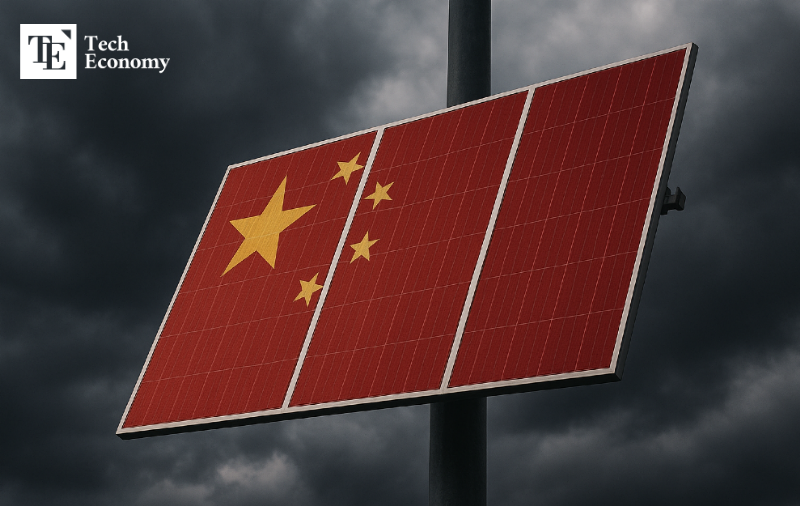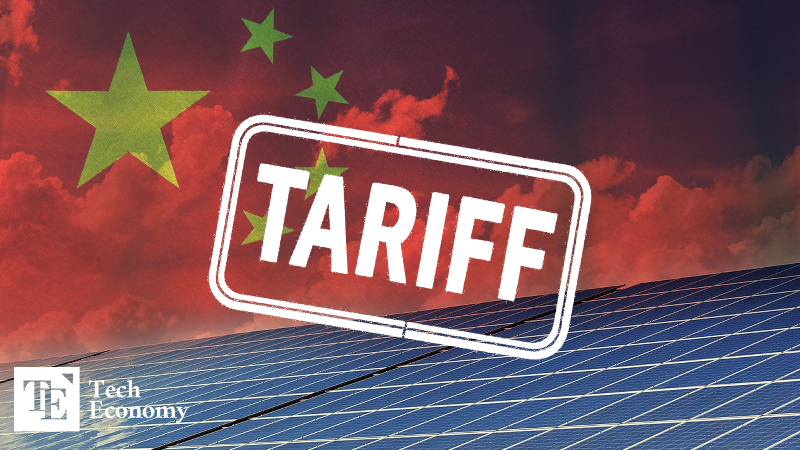Chinese Solar Industry on the Brink: Triple Blow of Tariffs, Overcapacity, and Price Wars Triggers Mass Layoffs
Input
Modified
Solar Module Prices Plunge 60–80% Across the Board Over 40 Bankruptcies This Year, Widespread Shift to Losses ‘3,500% Tariff Bomb’ Signals Exit Path for Chinese Solar Firms

China’s largest solar companies reportedly laid off one-third of their workforce last year, highlighting the severe crisis engulfing one of the nation’s government-backed “industries of the future.” With solar power reeling from falling prices and massive losses, the ongoing price war in sectors such as solar and electric vehicles is taking a significant toll across China’s industrial landscape.
Chinese Solar Industry Shrinks Workforce by 31%
According to Reuters on August 3 (local time), disclosures from five major Chinese solar companies—Longi Green Energy, Trina Solar, JinkoSolar, JA Solar, and Tongwei—show they collectively slashed around 87,000 jobs last year, amounting to a 31% reduction in total headcount. While no official layoff announcements were made, industry observers attribute the attrition to widespread salary cuts and reduced working hours, prompting many to leave voluntarily.
Given that employment is regarded as central to social stability in China, large-scale layoffs are politically sensitive. With the exception of Longi Green Energy, which admitted to a 5% headcount reduction, none of the companies officially acknowledged the cuts. Longi, based in Xi’an, Shaanxi Province, is a leading solar module producer, ranked first globally in wafers and second in modules.
In 2022, Longi set a world record with a photoelectric conversion efficiency of 26.81% for heterojunction (HJT) silicon solar cells—the first time a Chinese firm achieved a world record in silicon solar efficiency. Leveraging this technological milestone, Longi experienced rapid growth. Its production capacity rose from 105GW (wafers), 37GW (cells), and 60GW (modules) at the end of 2021 to 150GW, 60GW, and 85GW, respectively, by the end of 2022. The number of employees surged from roughly 4,000 in 2012 to 80,000 by the end of 2023. However, a sharp decline in net profit forced the company to implement aggressive cost-cutting measures starting last year.

Impact of Overcapacity and Price Undercutting
According to the China Photovoltaic Industry Association (CPIA), Chinese solar companies posted combined losses of $60 billion last year. Even the top seven module manufacturers, typically shielded from volatility due to scale, recorded losses for the first time since 2017. CPIA data shows that more than 40 solar companies were delisted, declared bankruptcy, or were forced into mergers and acquisitions in 2023. Analysts say the industry entered a downturn in late 2023, with conditions deteriorating further this year, and expect the slump to persist.
The profitability squeeze stems primarily from overcapacity and cutthroat price competition. Since 2020, China has funneled vast resources into solar, EV, and battery industries in response to a cooling property market. This led to a dramatic expansion in production capacity. Solar subsidies alone exceeded $50 billion, enabling China to dominate over 80% of the solar value chain from raw materials to finished products. Despite industry agreements to cut output to avoid mutual destruction, production surged to record levels.
According to the Asia Society Policy Institute, China installed 93GW of additional solar capacity in May alone—equivalent to 100 solar panels being deployed every second. As of late 2023, global demand for solar modules stood at 595GW, while China’s module production capacity reached 1,123GW, nearly twice the demand. The resulting price drop weakened profitability across the global market. CPIA reported that prices across all segments of the solar module supply chain plunged by up to 80% from their 2023 peak into 2024.
Bleeding-Edge Exports Disrupt Global Ecosystems
The repercussions of overproduction are not confined within China. In recent years, Chinese solar firms have flooded global markets with products priced below production costs, upending industrial ecosystems worldwide. With supply far outstripping demand, companies are waging a price destruction war both at home and abroad. Analysts note that China’s state-led solar expansion is now running up against its limits. Lavish subsidies and fixed-price bulk procurement policies, divorced from actual demand, have pushed the industry into crisis.
Compounding the pressure are punitive trade measures spearheaded by the Trump administration. In June, the U.S. imposed a staggering 3,521% tariff on Chinese solar modules rerouted through four Southeast Asian countries—Malaysia, Thailand, Vietnam, and Cambodia—in a move to block low-cost Chinese imports. The European Union is considering similar actions. Consequently, China’s solar module exports in Q1 dropped 8% year-on-year, with shipments declining again in April. The Global Solar Council forecasts that global solar installation growth will decelerate sharply—from 87% in 2023 to 33% in 2024 and just 10% in 2025.
Adding to the challenges, revisions to U.S. tax legislation—pushed through to fulfill key policy pledges of President Donald Trump—have dealt another blow to the solar industry. The so-called “One Big Beautiful Bill” (OBBBA), passed by Congress on July 3, includes provisions to prematurely phase out or scale back tax credits previously granted under the Inflation Reduction Act (IRA). Credits for generating solar power or investing in related infrastructure, originally set to expire after 2032, will now end by late 2027. Eligibility will also be narrowed to companies supplying power by that deadline. Experts warn that this substantial reduction in subsidies will likely prompt Chinese firms to shelve investment plans, leading to a marked contraction in the solar power sector.





















